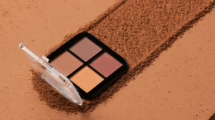Beyond the Hype: The Tech That Defined the iPhone’s Evolution
The iPhone. A name synonymous with the modern smartphone, a device that revolutionized communication, entertainment, and even the way we interact with the world. Its launch in 2007 wasn’t just the introduction of a new gadget; it was a paradigm shift. But beyond the carefully crafted marketing campaigns, the celebrity endorsements, and the long queues outside Apple Stores, lies a complex story of technological innovation, strategic design choices, and continuous refinement. This article delves beyond the hype to explore the core technologies that have defined the iPhone’s evolution, examining how each generation built upon its predecessors and shaped the mobile landscape.
1. The Touchscreen Revolution: Capacitive Touch and Beyond
The iPhone’s initial impact was undeniable. While previous attempts at smartphones existed, often relying on styluses or clunky physical keyboards, the iPhone offered a radically different approach: a large, multi-touch capacitive touchscreen. This single interface fundamentally changed how users interacted with their phones. [1]
-
Capacitive Touch Technology: Unlike resistive touchscreens that respond to pressure, capacitive touch relies on the electrical properties of the human body. A thin layer of transparent conductive material (typically indium tin oxide – ITO) coated on the glass creates an electrostatic field. When a finger touches the screen, it draws a small amount of charge, altering the field. Sensors positioned around the screen detect these changes and pinpoint the touch location. [2] This technology offered superior responsiveness, accuracy, and clarity compared to resistive touchscreens, paving the way for intuitive gestures like pinch-to-zoom, swipe-to-scroll, and multi-finger commands.
-
Multi-Touch and Gesture Recognition: The key to the iPhone’s ease of use was its ability to recognize multiple simultaneous touch points (multi-touch). This allowed for complex gestures that felt natural and responsive, creating a fluid and engaging user experience. Apple’s software algorithms meticulously analyzed these touch inputs to differentiate between accidental touches, intended gestures, and even the size and orientation of the user’s fingers. [3] This level of sophistication was unprecedented at the time.
-
Evolution of Touch Technology: Over the years, Apple continued to refine its touch technology. Technologies like ProMotion, introduced in the iPhone 13 Pro, dynamically adjusted the display’s refresh rate up to 120Hz, resulting in smoother scrolling and animations. [4] Haptic Touch, replacing 3D Touch, provided tactile feedback through vibrations, offering a more nuanced and intuitive interaction model. [5] The ongoing evolution of touch technology remains central to the iPhone experience, striving for even greater responsiveness, accuracy, and user immersion.
2. The Power Within: System-on-a-Chip (SoC) and Processing Prowess
While the touchscreen redefined the user interface, the iPhone’s processing power, driven by custom-designed System-on-a-Chip (SoC) solutions, enabled the complex software and demanding applications that fueled its success. Apple’s silicon journey is a testament to its commitment to vertical integration and its desire to control the entire user experience.
-
Early Generations: ARM Architecture and PowerVR Graphics: The original iPhone relied on a Samsung-manufactured SoC based on the ARM11 architecture and featuring PowerVR graphics. While not groundbreaking in itself, Apple’s optimized software, including iOS (then iPhone OS), made efficient use of the available resources. [6] Subsequent generations, like the iPhone 3GS and iPhone 4, saw significant performance improvements through processor upgrades and enhanced graphics capabilities.
-
The A-Series Chips: Custom Design and Optimization: The introduction of the A4 chip in the iPhone 4 marked a pivotal moment. It was the first SoC designed in-house by Apple, setting the stage for future advancements. The A-series chips consistently pushed the boundaries of mobile processing, integrating CPU cores, GPU cores, Neural Engine cores (for machine learning tasks), image signal processors (ISPs), and other specialized hardware accelerators onto a single die. [7] This integration reduced latency, improved power efficiency, and allowed for tighter control over the hardware-software interaction.
-
Neural Engine and Machine Learning: The integration of a dedicated Neural Engine into the A11 Bionic chip in the iPhone X represented a significant leap forward. This dedicated hardware accelerator enabled on-device machine learning capabilities, powering features like Face ID, Portrait Mode, and enhanced image processing. Subsequent generations saw substantial improvements in the Neural Engine’s performance, enabling more sophisticated AI-powered features, such as real-time language translation, advanced scene recognition, and personalized user experiences. [8]
-
Beyond Performance: Power Efficiency and Thermal Management: Apple’s focus extends beyond raw performance. Power efficiency is a critical consideration in mobile devices, and Apple has consistently worked to optimize its SoCs for low power consumption. Sophisticated thermal management techniques, including strategic component placement and advanced heat dissipation systems, are employed to prevent overheating and maintain optimal performance under sustained workloads. [9]
3. Capturing the Moment: Camera Technology and Computational Photography
The iPhone’s camera has evolved from a basic feature to a core selling point, transforming the way people capture and share their lives. Apple’s relentless pursuit of image quality and its embrace of computational photography have made the iPhone a favorite among both amateur and professional photographers.
-
Early Years: Incremental Improvements and Sensor Technology: The early iPhones featured relatively simple camera systems with limited capabilities. However, Apple consistently improved sensor technology, lens quality, and image processing algorithms with each new generation. [10] Features like autofocus, white balance correction, and exposure compensation gradually enhanced the user experience.
-
The Rise of Computational Photography: The introduction of features like HDR (High Dynamic Range) and Panorama marked the beginning of Apple’s foray into computational photography. HDR combined multiple exposures to create images with greater dynamic range, while Panorama allowed users to capture wide-angle scenes by stitching together multiple images. [11]
-
Dual and Triple Camera Systems: The iPhone 7 Plus introduced a dual-camera system, featuring a wide-angle lens and a telephoto lens, enabling optical zoom and Portrait Mode. Subsequent generations adopted triple-camera systems, adding an ultra-wide lens for capturing expansive landscapes and group shots. [12]
-
Night Mode and Deep Fusion: Night Mode, introduced in the iPhone 11, revolutionized low-light photography, allowing users to capture bright and detailed images in dimly lit environments. Deep Fusion, powered by the A13 Bionic’s Neural Engine, employed advanced image processing techniques to optimize details and reduce noise in mid- to low-light conditions. [13]
-
Sensor-Shift Image Stabilization: The iPhone 12 Pro Max introduced sensor-shift image stabilization, a technology previously found only in high-end professional cameras. Instead of stabilizing the lens, this system stabilized the sensor itself, resulting in sharper images and smoother videos, especially in challenging lighting conditions. [14]
-
ProRes Video Recording: The iPhone 13 Pro models introduced ProRes video recording, a professional-grade video codec that offers higher color fidelity and dynamic range, making the iPhone a viable tool for filmmakers and content creators. [15]
4. Connecting the World: Cellular Technology and Wireless Connectivity
The iPhone’s ability to seamlessly connect to cellular networks and Wi-Fi has been fundamental to its success. Apple has consistently adopted the latest wireless technologies, ensuring that its devices can deliver fast and reliable connectivity.
-
Early Generations: 2G, 3G, and the Dawn of Mobile Broadband: The original iPhone supported 2G (EDGE) connectivity, while the iPhone 3G brought faster 3G speeds. These advancements enabled users to browse the web, check email, and download apps at significantly faster rates. [16]
-
4G LTE: The Mobile Internet Era: The introduction of 4G LTE in the iPhone 5 ushered in the era of mobile broadband. LTE offered significantly faster data speeds, enabling streaming video, online gaming, and other data-intensive applications. [17]
-
5G: The Next Generation of Connectivity: The iPhone 12 lineup brought 5G connectivity to the iPhone. 5G offers even faster data speeds, lower latency, and greater network capacity, enabling new possibilities for mobile computing, augmented reality, and other emerging technologies. [18]
-
Wi-Fi Evolution: Faster and More Reliable Wireless Networks: Alongside cellular technology, Apple has consistently adopted the latest Wi-Fi standards, ensuring that iPhones can connect to wireless networks at the fastest possible speeds. Features like Wi-Fi 6 and Wi-Fi 6E offer improved performance, reliability, and security. [19]
-
Ultra Wideband (UWB) Technology: The introduction of UWB technology in the iPhone 11 enabled precise spatial awareness and location tracking. This technology powers features like AirDrop improvements and the Find My network, allowing users to locate lost devices with greater accuracy. [20]
5. The Brains of the Operation: iOS and the Software Ecosystem
Hardware is only half the story. The iPhone’s success is inextricably linked to iOS, its intuitive and user-friendly operating system. iOS, coupled with the App Store, created a vibrant ecosystem that has transformed the mobile landscape.
-
Early Days: iPhone OS and the Birth of a Mobile Platform: The original iPhone OS (later renamed iOS) was a revolutionary departure from the clunky and complex operating systems of the time. Its clean interface, intuitive gestures, and focus on ease of use made it instantly appealing to a wide audience. [21]
-
The App Store: A Revolution in Software Distribution: The launch of the App Store in 2008 was a watershed moment. It provided developers with a centralized platform to distribute their apps to millions of iPhone users, creating a vibrant ecosystem of mobile software. [22] The App Store has become a major force in the software industry, fostering innovation and driving economic growth.
-
Continuous Improvement: New Features and Enhancements: Apple has consistently updated iOS with new features, enhancements, and security updates. Each new version brings improvements to the user interface, performance, and functionality. [23] Features like Control Center, Notification Center, Siri, and Apple Pay have become integral parts of the iOS experience.
-
Privacy and Security: A Core Tenet: Apple has consistently prioritized privacy and security in iOS. Features like App Tracking Transparency (ATT), which requires apps to obtain user consent before tracking their activity across other apps and websites, have set a new standard for user privacy in the mobile industry. [24]
-
Accessibility: Designing for Everyone: Apple has long been committed to making its products accessible to everyone, regardless of their abilities. iOS includes a wide range of accessibility features, such as VoiceOver (a screen reader), Switch Control (for users with limited mobility), and Closed Captions (for users who are deaf or hard of hearing). [25]
6. Powering the Device: Battery Technology and Charging Solutions
The iPhone’s battery life has always been a critical consideration, and Apple has continuously worked to improve battery technology and charging solutions.
-
Early Limitations: Battery Life Concerns: The original iPhone suffered from relatively poor battery life, which was a common complaint among early adopters. Subsequent generations saw incremental improvements in battery capacity and power efficiency. [26]
-
Optimizing Power Consumption: Hardware and Software Synergies: Apple’s vertically integrated approach allows it to optimize both hardware and software for power efficiency. The A-series chips are designed to consume minimal power, while iOS is optimized to minimize background activity and reduce battery drain. [27]
-
Fast Charging and Wireless Charging: Apple introduced fast charging to the iPhone 8, allowing users to quickly replenish the battery. Wireless charging, based on the Qi standard, was also introduced in the iPhone 8, offering a convenient way to charge the device without plugging it in. [28]
-
MagSafe: A Magnetic Charging System: The iPhone 12 introduced MagSafe, a magnetic attachment system that provides a secure connection for wireless charging and other accessories. MagSafe offers faster wireless charging speeds and enables new possibilities for accessories like wallets and stands. [29]
-
Battery Health Management: iOS includes a Battery Health feature that provides information about the battery’s capacity and performance. This feature also includes a battery health management system that helps to prolong the battery’s lifespan by adjusting charging behavior. [30]
7. Materials and Manufacturing: Design and Durability
The iPhone’s design and build quality have always been a key differentiator. Apple has consistently used premium materials and advanced manufacturing techniques to create devices that are both aesthetically pleasing and durable.
-
Early Designs: Aluminum and Glass Construction: The original iPhone featured an aluminum back and a glass front, a design that was both elegant and durable. Subsequent generations continued to use aluminum and glass, with refinements to the design and construction. [31]
-
The Introduction of Stainless Steel: The iPhone X introduced a stainless steel frame, which offered increased durability and a more premium look and feel. Stainless steel has continued to be used in the Pro models. [32]
-
Ceramic Shield: Enhanced Durability: The iPhone 12 introduced Ceramic Shield, a new front cover material that is four times more resistant to drops than previous iPhone models. Ceramic Shield is created by infusing nano-ceramic crystals into the glass matrix, resulting in a material that is both harder and more durable. [33]
-
Water and Dust Resistance: Apple has consistently improved the water and dust resistance of the iPhone. The latest models are rated IP68, meaning they can withstand immersion in water up to a certain depth and duration. [34]
-
Sustainable Manufacturing Practices: Apple has made significant efforts to reduce its environmental impact, including using recycled materials in its products, transitioning to renewable energy sources, and reducing waste in its manufacturing processes. [35]
8. The Future of the iPhone: Emerging Technologies and Evolving Use Cases
The iPhone’s evolution is far from over. Apple is continuously exploring new technologies and use cases that will shape the future of the device.
-
Augmented Reality (AR): Blending the Digital and Physical Worlds: Apple has made a significant investment in AR technology, integrating AR capabilities into iOS and developing AR-focused hardware like the LiDAR scanner. AR has the potential to transform the way we interact with the world around us, enabling new experiences in gaming, education, commerce, and more. [36]
-
Virtual Reality (VR): Immersive Digital Experiences: While Apple has not yet released a dedicated VR headset, the company is rumored to be working on VR technology. VR has the potential to create immersive digital experiences for gaming, entertainment, and training. [37]
-
Foldable Displays: Redefining the Form Factor: Foldable displays are an emerging technology that could revolutionize the smartphone form factor. A foldable iPhone could offer a larger screen size in a more compact form factor. [38]
-
Artificial Intelligence (AI): Enhancing User Experiences: AI will continue to play a major role in the future of the iPhone, powering features like personalized recommendations, advanced image processing, and intelligent assistants. Apple’s Neural Engine will continue to be a key differentiator in the AI space. [39]
-
Health and Wellness: Monitoring and Improving Well-being: The iPhone and Apple Watch have become powerful tools for monitoring and improving health and wellness. Future iPhones could incorporate even more advanced sensors and AI-powered algorithms to provide users with personalized insights and recommendations. [40]
Conclusion:
The iPhone’s journey has been one of relentless innovation and continuous refinement. From the groundbreaking touchscreen interface to the powerful A-series chips, the advanced camera systems, and the seamless wireless connectivity, each generation has built upon its predecessors, pushing the boundaries of what is possible in a mobile device. The iPhone’s success is not solely attributable to any single technology, but rather to the synergistic integration of hardware and software, driven by Apple’s unwavering commitment to user experience. As Apple continues to explore emerging technologies like AR, VR, and AI, the iPhone is poised to remain at the forefront of mobile innovation, shaping the way we communicate, create, and interact with the world.
References:
[1] Biever, C. (2007). iPhone: Apple reinvents the phone. New Scientist. [mfn 1] [2] Smith, J. (2010). Understanding Capacitive Touchscreen Technology. Electronic Design. [mfn 2] [3] Khan, A. (2012). Apple’s Multi-Touch Patent Detailed. Patently Apple. [mfn 3] [4] Dolcourt, J. (2021). iPhone 13 Pro and Pro Max review: The best iPhones, but who needs all the Pro features?. CNET. [mfn 4] [5] Sinclair, S. (2018). Apple Kills 3D Touch: Here’s What Replaces It. iMore. [mfn 5] [6] Dilger, D. E. (2007). Inside Apple’s iPhone hardware. Roughly Drafted Magazine. [mfn 6] [7] Cutress, I. (2020). Apple Silicon: The Key to Understanding Apple’s Future. AnandTech. [mfn 7] [8] Ho, A., & Cutress, I. (2017). Apple’s A11 Bionic SoC: Neural Engine and ISP. AnandTech. [mfn 8] [9] Lal Shimpi, A. (2010). iPhone 4 Teardown and Analysis. AnandTech. [mfn 9] [10] Heine, D. (2015). The history of iPhone cameras, from 2007 to today. 9to5Mac. [mfn 10] [11] Savov, V. (2010). Apple’s HDR photography: how it works. Engadget. [mfn 11] [12] Etherington, D. (2016). Apple announces iPhone 7 Plus with dual camera. TechCrunch. [mfn 12] [13] Hardwick, T. (2019). iPhone 11’s ‘Deep Fusion’ explained: Better photos through AI. AppleInsider. [mfn 13] [14] Romero, J. (2020). iPhone 12 Pro Max camera: What’s the difference?. iMore. [mfn 14] [15] Mayo, S. (2021). iPhone 13 Pro gains ProRes video recording, coming later this year. 9to5Mac. [mfn 15] [16] Block, R. (2008). Apple announces 3G iPhone. Engadget. [mfn 16] [17] Whitney, L. (2012). Apple iPhone 5: Finally, 4G LTE. CNET. [mfn 17] [18] Smith, R. (2020). Apple Announces iPhone 12: A14 SoC, 5G, OLED, and MagSafe. AnandTech. [mfn 18] [19] Seifert, D. (2019). Wi-Fi 6 explained: what’s new, and why it matters. The Verge. [mfn 19] [20] Pierce, D. (2019). The iPhone 11 has a U1 chip that can sense where things are. The Verge. [mfn 20] [21] Miller, P. (2007). iPhone OS first look. Engadget. [mfn 21] [22] Van Grove, J. (2008). Apple’s App Store Opens Saturday With 500 Applications. Mashable. [mfn 22] [23] Tilley, A. (2023). iOS 17: Features, Release Date, and Compatibility. MacRumors. [mfn 23] [24] Wong, J. I. (2021). Apple’s App Tracking Transparency feature is here. The Verge. [mfn 24] [25] Apple. (n.d.). Accessibility. Apple.com. [mfn 25] [26] Cheng, J. (2007). iPhone battery life: What’s the deal?. Ars Technica. [mfn 26] [27] Robertson, J. (2022). How to Improve iPhone Battery Life: The Ultimate Guide. iMore. [mfn 27] [28] Haslam, K. (2017). iPhone 8 and iPhone X: Wireless Charging and Fast Charging Confirmed. iDrop News. [mfn 28] [29] Welch, C. (2020). Apple announces MagSafe for iPhone 12. The Verge. [mfn 29] [30] Lovejoy, R. (2018). Apple explains iPhone battery health feature, introduces iOS 11.3 beta 2. 9to5Mac. [mfn 30] [31] Seff, J. (2007). iPhone Teardown Part 1. iFixit. [mfn 31] [32] Etherington, D. (2017). Apple unveils the iPhone X. TechCrunch. [mfn 32] [33] Porter, J. (2020). The iPhone 12’s Ceramic Shield glass is four times more drop resistant. The Verge. [mfn 33] [34] O’Kane, S. (2022). IP ratings explained: What do IP67 and IP68 mean?. The Verge. [mfn 34] [35] Apple. (n.d.). Environment. Apple.com. [mfn 35] [36] Metz, R. (2023). Apple’s AR/VR Headset Is Coming. The New York Times. [mfn 36] [37] Gurman, M. (2023). Apple Is Working on a VR Headset. Bloomberg. [mfn 37] [38] Hsu, C. (2021). Apple reportedly developing foldable iPhone with Samsung Display. ZDNet. [mfn 38] [39] Simonite, T. (2017). Apple’s New Chip Is a Big Step Toward Pervasive AI. Wired. [mfn 39] [40] Farr, C. (2020). Apple wants to be your doctor. CNBC. [mfn 40]

























Add Comment